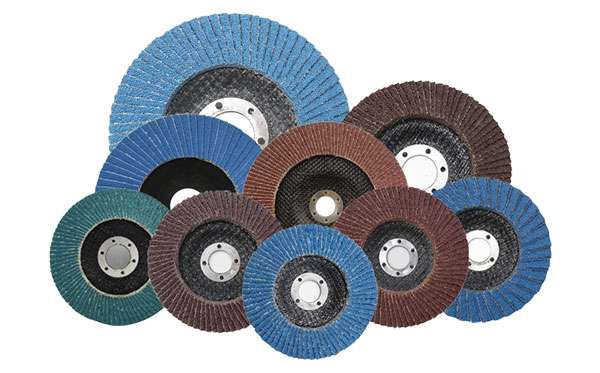When it comes to metal fabrication, construction, or even DIY projects, choosing the right abrasive tool can significantly impact your efficiency and the quality of your work. Flap discs and grinding discs are two common options, each offering unique advantages depending on the task at hand. Here’s a breakdown to help you decide which one suits your needs best:
Grinding Discs:
Composition and Purpose:
Grinding discs, also known as grinding wheels, are typically composed of abrasive particles bonded together with a resin or glass fiber. They come in various shapes and sizes, with straight edges for flat surfaces or contoured edges for more intricate grinding tasks.
Characteristics and Applications:
- Material Removal: Grinding discs excel in rapid material removal. They are designed to grind down surfaces quickly and efficiently.
- Suitable Materials: Ideal for grinding metals such as steel, stainless steel, and cast iron. They are also effective on stone and concrete.
- Versatility: Available in different grits for rough grinding (lower grits) or finishing (higher grits).
- Durability: Durable and long-lasting, especially when used at the correct speed and pressure.
Applications:
- Weld Cleanup: Removing weld splatter and smoothing weld seams.
- Surface Preparation: Preparing surfaces for painting or coating.
- Metal Fabrication: Shaping and grinding metal components.
Flap Discs:
Composition and Purpose:
Flap discs are made up of overlapping abrasive flaps bonded to a central hub. These flaps wear away during use, exposing fresh abrasive material and maintaining a consistent finish.
Characteristics and Applications:
- Grinding and Finishing: Flap discs combine grinding and finishing in one step, providing a smoother finish compared to grinding discs.
- Material Removal: Although slightly slower in material removal rate than grinding discs, flap discs offer better control and a more refined finish.
- Suitable Materials: Effective on metals such as steel, stainless steel, and aluminum. They can also be used on wood and fiberglass.
- Cooler Grinding: They generate less heat, reducing the risk of discoloration or warping in the workpiece.
Applications:
- Deburring: Removing sharp edges and burrs from metal parts.
- Surface Blending: Blending weld seams seamlessly into the base metal.
- Final Finishing: Achieving a smooth surface ready for painting or coating.
Choosing Between Flap Discs and Grinding Discs:
Considerations:
- Material Type: Determine the type of material you will be working with (metal, wood, concrete) to select the appropriate disc.
- Surface Finish: If a smooth finish is critical, flap discs are generally preferred due to their blending and finishing capabilities.
- Material Removal Speed: For rapid material removal, especially on rough surfaces, grinding discs are more efficient.
- Workpiece Sensitivity: Flap discs are gentler on the workpiece and less likely to cause damage or overheating.
Conclusion:
Choosing between flap discs and grinding discs depends largely on your specific application requirements. If you need fast material removal and are primarily concerned with efficiency, grinding discs are the way to go. However, if you prioritize a smooth finish and versatility in grinding and finishing tasks, flap discs offer a more balanced approach. Understanding the differences and strengths of each type will help you make an informed decision, ensuring optimal results in your projects.



